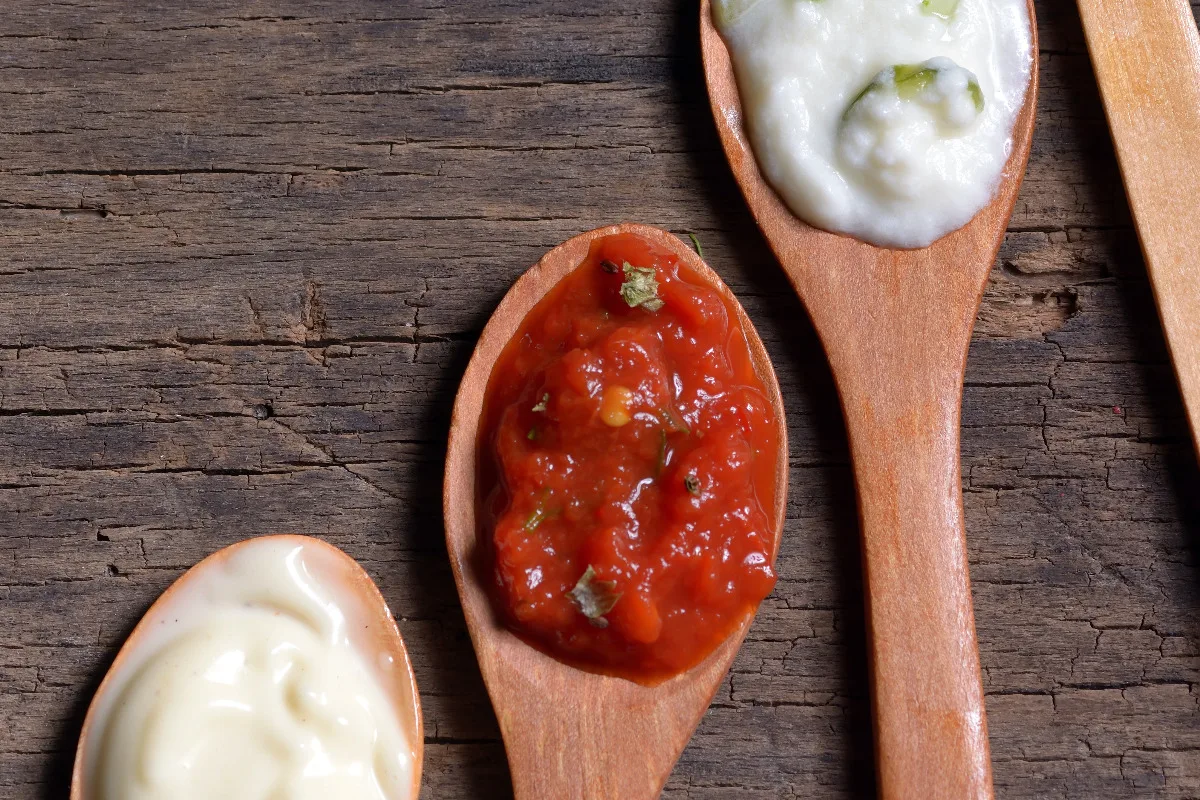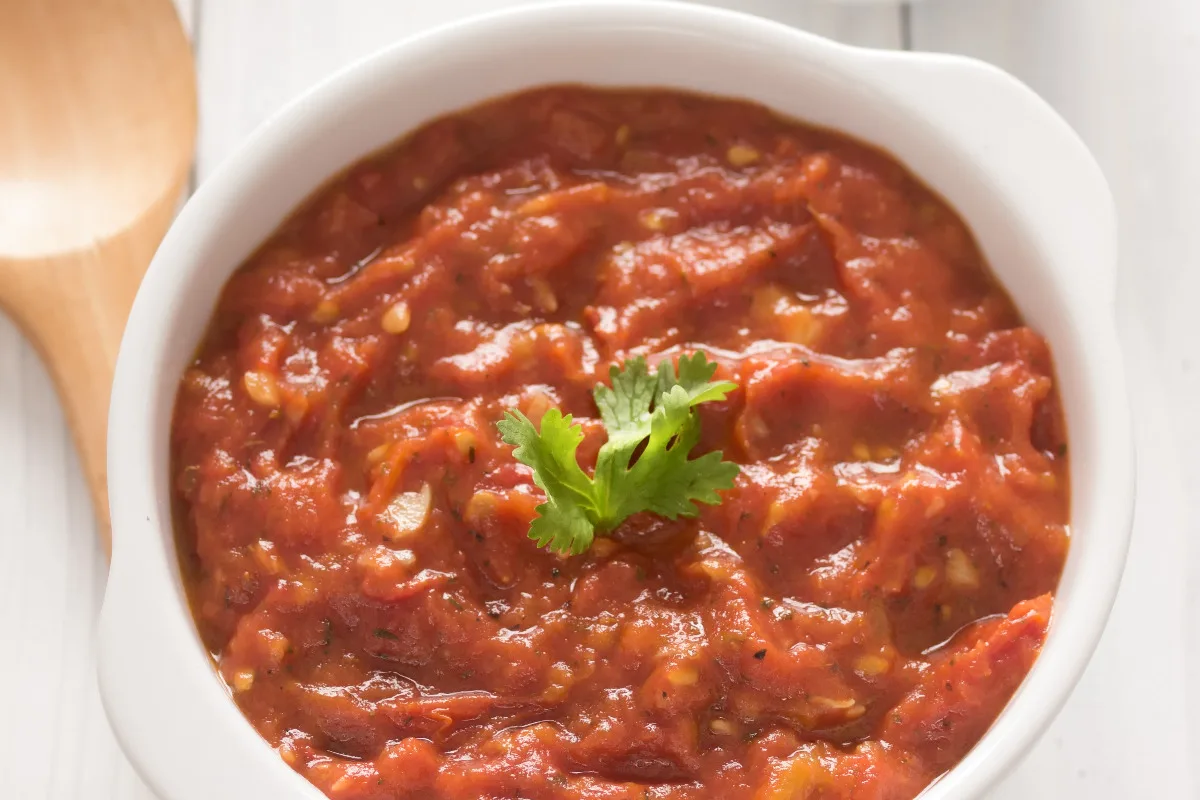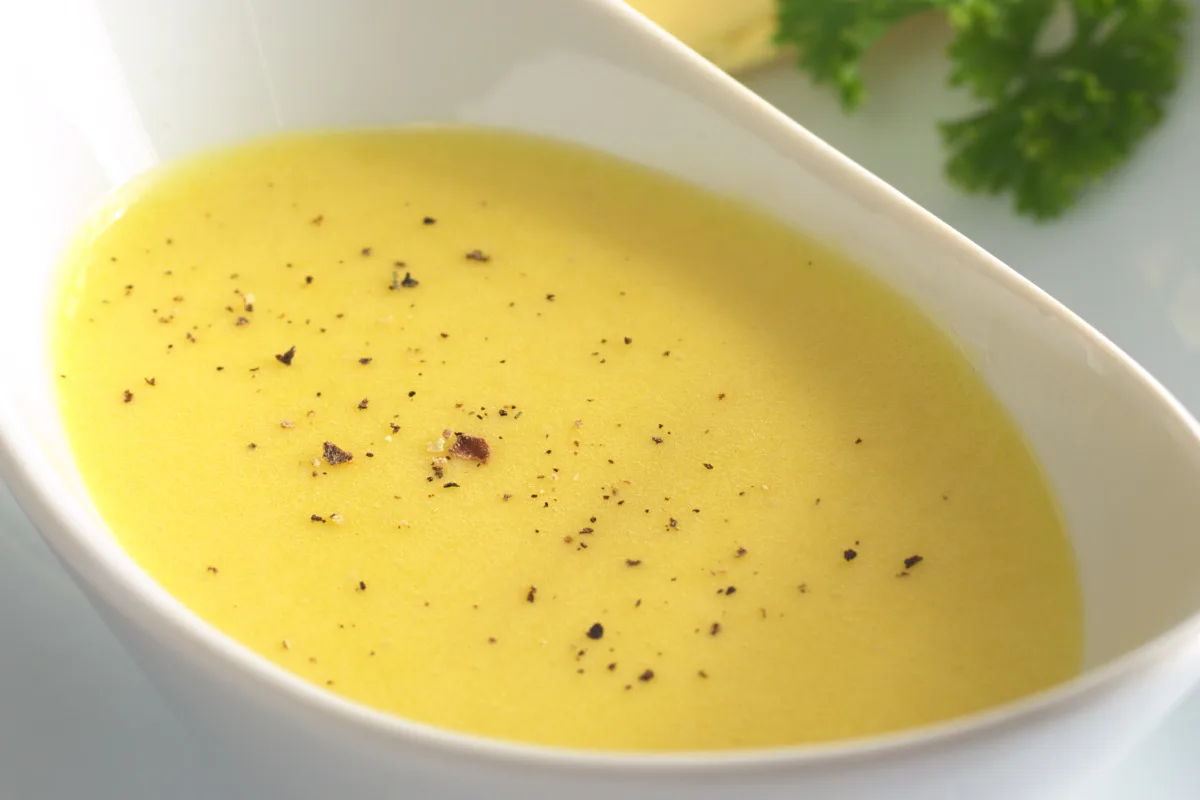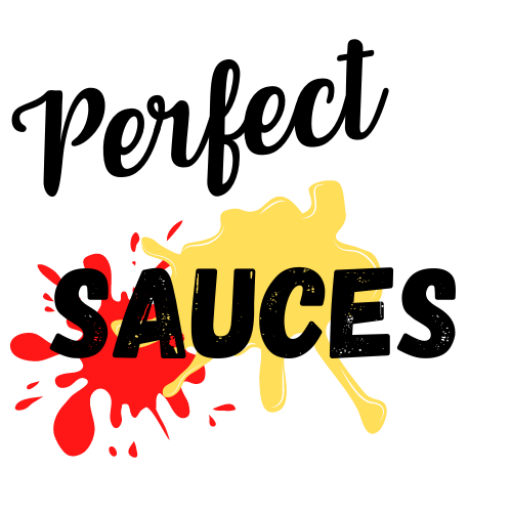The mother sauces. Some of the most delicious sauces stem from these 5 vital sauces. The base of some of your favorite chicken sauces, fish sauces, and salmon sauces comes from either Béchamel, Velouté, Espagnole, Tomato sauce or Hollandaise. But what are the 5 mother sauces made of, and how did they come about? Let’s find out!

Jump To
📌 What Is A Mother Sauce?
The term “mother sauce” refers to any one of the five basic sauces, which serve as the starting points for making various secondary sauces or “small sauces.” The concept of the 5 mother sauces is attributed to the influential French chef Auguste Escoffier, who forever associated them with French cuisine. However, the concept of the mother sauces actually comes before Escoffier, with roots dating back to Marie Antoine-Carême in the 19th century. He discovered that all sauces consisted of the same three elements: a liquid, a thickener, and seasoning.
💡 The 5 Mother Sauces
Béchamel
The most basic sauce and root of some of your favorite sauce blends. Béchamel sauce is a traditional French sauce crafted from a simple blend of white roux and milk. The classic preparation uses the addition of butter, flour, salt, and nutmeg in its classic preparation. The neutral taste is a perfect combo for its thick, creamy texture. It’s actually the base for every cheese sauce and acts as a way to thicken cheese sauce. A simple yet super versatile sauce used in tons of dishes like chicken pot pie, macaroni and cheese, scalloped potatoes, lasagna, and gravy.
Tomato
The deep, tomatoey goodness of this mother sauce acts as the delicious base for some of your favorite foods. Tomato sauce, known as sauce tomat in French, is a thick, tomato mother sauce. Its blend tomato puree cooked with mirepoix and added spices such as bay leaf, thyme, and oregano, along with various other ingredients, makes for a delicious pizza sauce alternative, gnocchi, or polenta.

Espagnole
Taking a step back from the common simple blends is one of the more complex mother sauces. Espagnole is a rich blend of roux, brown stock, mirepoix, and tomatoes, with various other ingredients. The sauce is traditionally further refined to produce a deeply flavorful sauce called demi-glaze. This has a more potent flavor that tastes like rich stock lightened with the mild acidity of tomatoes. A fitting flavor combo that serves as the base for other recipes such as Beef Stroganoff, Vegetable Beef Soup, and Beef and Mushroom Enchiladas.
Hollandaise
One of the most well-known mother sauces, Hollandaise sauce is a rich, elegant sauce laced with a buttered cream and lemon flavor. The word “hollandaise” is of French origin, translating to “Dutch sauce” in English. This sauce is actually an emulsion, meaning its ingredients don’t naturally combine. These ingredients being egg yolk, melted butter, and lemon juice with optional flavorings such as cayenne pepper. This creamy, tangy, indulgent sauce is best paired with eggs Benedict, poached salmon, and flowering vegetables.

Velouté
Derived from the French word for “velvet,” this highly versatile white sauce stands as one of the richest and creamiest mother sauces. Velouté is often referred to as the “fat white sauce” or “rich white sauce” with three variations, the chicken velouté, fish velouté, and veal velouté. The sauce has a subtle, light flavor and a smooth texture. This makes it one of the most neutral of the five mother sauces. It’s typically served over poached or steamed fish or as a tasty sauce for chicken and rice.
🧐 FAQs
A sister sauce is a sauce that’s made by adding additional ingredients to one of the five mother sauces. For example, adding cheese to béchamel sauce creates Mornay sauce, which is a sister sauce. Similarly, adding red wine to espagnole sauce creates bordelaise sauce.
The five mother sauces were first classified by French chef Auguste Escoffier in the late 19th century. Escoffier was a pioneer in French cuisine and his book “Le Guide Culinaire” is still considered a classic in culinary circles. The five mother sauces he identified are béchamel, velouté, espagnole, Hollandaise, and tomato sauce.
The term “mother sauce” comes from French cuisine, where these five sauces are considered the foundation of many other sauces. The term “mother” implies that these sauces are the starting point for many other sauces.
